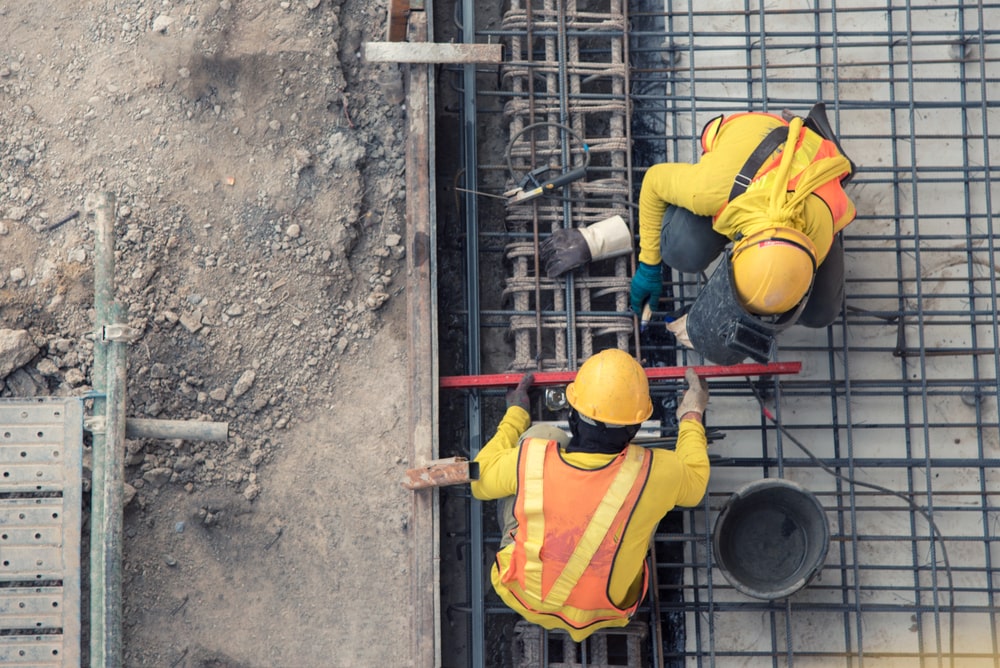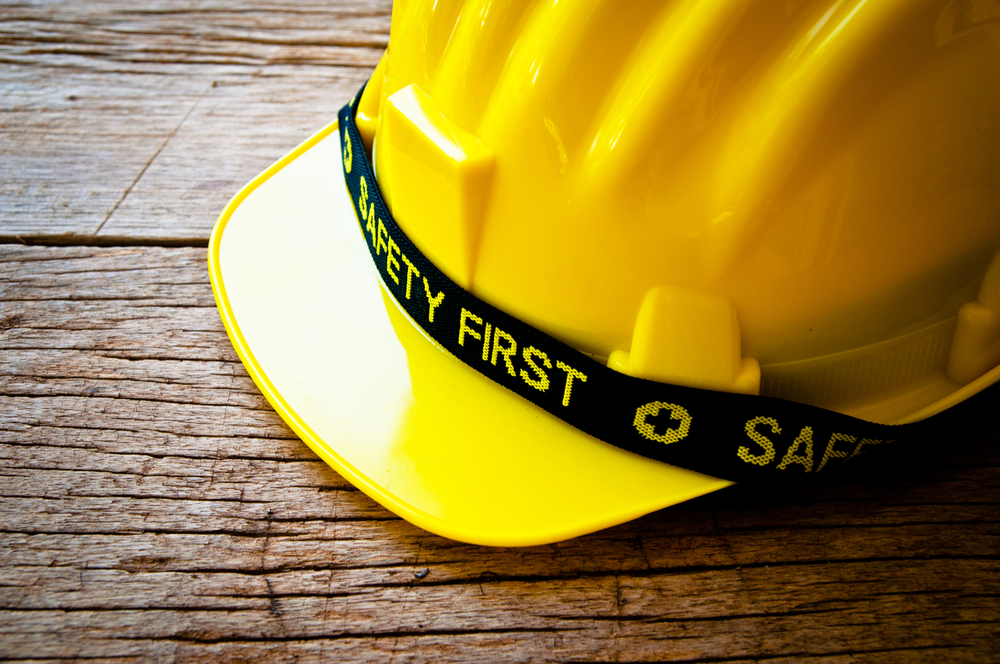News Post
December Newsletter 2014
Architects fined for safety failings in care home construction
A firm of architects has been fined for safety failings in the construction of a new timber frame care home.
The Court heard that firm had not given contractors relevant information about the flammability of the timber frame used in the construction of the new building.
A routine inspection of the work by a Health and Safety Executive (HSE) inspector found that the separation distance between the new timber frame building under construction and an adjacent occupied care home was insufficient.
As a result, had the timber frame caught fire there was a serious risk that the radiant heat would cause the fire to spread to the care home, putting the lives of residents and staff inside at risk.
HSE found that there was nothing in the design specification produced by the architects to alert construction workers erecting the timber frame to the additional fire risk it created, and the need to take action accordingly.
The court was told that it would have been reasonable for the firm to have specified in its design that fire-resistant timber be used or that it considered the sequence of construction so that the timber frame of each floor was clad before the next one was constructed, reducing the amount of timber exposed at any one time.
They were fined a total of £1,500 after pleading guilty to two breaches of the Construction (Design and Management) Regulations 2007. The company was also ordered to pay £816 costs.
Speaking after the case the HSE inspector said: “Timber frames will burn faster and more completely when the panels are incomplete and not yet protected by the usual internal fire-resistant plasterboard and external cladding.
“When burning, exposed timber frame structures generate a lot of radiant heat and there have been a number of large and serious fires which have affected neighbouring properties with devastating consequences, though thankfully without loss of life.
“There was a real danger here that had there been a fire it could have spread to the adjacent care home, putting the lives of the residents and staff inside at risk. The firm failed to consider this risk in its design and failed to provide sufficient information to the contractors to enable them to carry out the construction safely.”
For more information about construction design and management issues log onto the website at: http://www.hse.gov.uk/construction/cdm.htm
Driver killed by tape measure dropped from 50th floor
A man delivering construction materials to a high-rise site in New York died in a freak accident yesterday when a tape measure fell from the building’s 50th floor and hit him on the head.
The man was delivering materials to a high-rise building under construction.
Police said he stepped out of his lorry but left his hard hat inside.
As he walked toward the building a tape measure fell from the belt of a worker on the tower’s top floor.
Police said it struck a piece of metal about three metres from the ground and ricocheted into the man’s head.
The City Public Safety Director said: “Upon preliminary investigation, it appears to be a very tragic accident and construction work was stopped at the site after the accident.”
The luxury high-rise, which is nearing completion, is part of a development that includes a hotel and two additional rental buildings, one of which already has all of its 400 apartments leased.
Dangerous roof work caught on camera
A builder has been fined after two of his workers were photographed on a house roof without safety measures in place.
He was prosecuted by the HSE following the incident at a semi-detached house.
The Magistrates’ Court heard a passing HSE inspector spotted the men installing a dormer window for a loft conversion at the property. He was inside the house and his two workers were close to the chimney on the outside, without any scaffolding or other safety measures to prevent them from being injured in a fall.
He was fined £2,000 and ordered to pay £400 in prosecution costs after pleading guilty to a breach of the Work at Height Regulations 2005.
Speaking after the hearing, the HSE Inspector, said: “It’s astonishing that the builder was prepared to carry out a construction project that involved major roof work, without putting safety measures in place to protect the people he employed.
“While he worked safely inside the house, the lives of two men were being put at risk as they clambered about on the roof. The work simply shouldn’t have been allowed to go ahead without the use of scaffolding or other safety equipment.
“The risks from working at height are well known in the construction industry. It is therefore only luck that no one was injured on this occasion.”
Building business turns ‘blind eye’
A building firm has been fined after it ‘turned a blind eye’ to potential asbestos hazards being faced by its workers, who were converting an old pub into flat.
The Magistrates were told that concerns about health and safety on the site were raised by local people, who were also worried about the risks to passers-by.
An Inspector from the HSE visited to check conditions, and enforcement action regarding unsafe work at height and inadequate fire precautions was taken against the builders that day. The firm was also asked to provide information about how they were managing the asbestos risks on site, but HSE heard nothing from them.
As a result, HSE visited again and served an improvement notice on the company, giving them four weeks to provide the workers with the training they needed to enable them to identify materials that might contain asbestos if found during their refurbishment works, and to know how to deal with it correctly. The deadline was later extended by a week.
The builders failed to comply and, despite assurances to the contrary, its failure to comply persisted, remaining in breach of the notice right up to the date of the prosecution.
They were fined £2,000 and ordered to pay £4,500 in costs for breaching the Health and Safety at Work etc Act 1974.
After the hearing, the HSE Inspector said: “The improvement notice was straightforward. It was simple and inexpensive to comply with, by providing training to employees liable to be exposed to asbestos.
“If the company had any doubts or questions, it had ample opportunity to ask them and I would have done all I could to help. Instead it apparently buried its head in the sand.
“As well as not meeting the extended deadline, the company continued in its failure to provide any evidence of compliance at any time during more than a year. It seems the builders just turned a blind eye to its responsibilities.”
Roof contractor prosecuted after employee’s fall
A Roofing Specialists Company was handed a £9,000 fine plus costs of £1,500 at Crown Court, after pleading guilty to four breaches of health and safety legislation
The Health and Safety Executive for Northern Ireland (HSENI) brought the case in relation to an incident that took place in 2013.
A 54-year-old employee of the company suffered multiple injuries after falling over three metres through asbestos cement roof sheeting. The roofing company had been contracted to strip the roof sheets from a large garage.
The incident occurred as a result of an unsafe system of work combined with a lack of onsite supervision. The HSENI investigation found that none of the simple and commonly available measures to prevent workers from falling, such as netting or airbags below the roof, were in place.
Neither did the company use a mobile elevated work platform inside the garage, which would have allowed the workers to access all areas of the roof quickly and safely from below.
A suitable and sufficient risk assessment had not been carried out before starting the work, which if completed would have set out how to remove the asbestos roof sheets safely. Neither had it provided adequate training for its employees who could have been exposed to asbestos fibres or taken the necessary precautions to limit the exposure to asbestos.
After the hearing, the inspector with HSENI’s major investigation team, said: “The dangers of working at height are well known and the law requires all employers to control the risk of injury to their workers. A range of methods are available and suitable protection measures must always be put in place to prevent injury to workers from falls from height.”
She added: “The dangers of asbestos are also well known. There is no safe level of exposure to asbestos and the correct procedures for working with it are long established. It is a legal requirement that contractors understand and follow procedures to prevent the spread of and exposure to asbestos.”
Bowling alley tragedy
A maintenance man died after getting trapped in the pin setting machinery at a bowling alley in Ohio
House builder fined £10k for ignoring safety warnings
A construction firm has been fined after it ignored repeated warnings about safety at a building site for a row of terraced houses. HSE said that the case should act as a warning to other firms who will find themselves in court if they fail to take action upon notices issued against them.
The firm was prosecuted by HSE after it continued to stack bricks on scaffolding without measures in place to stop them falling and injuring people below.
It was heard in Court that an HSE inspector had identified the issue on a visit to the building site for ten new terraced houses.
She noticed that the bricks were being stored on the scaffolding platform above the height of the toe board, which meant there was a risk of them falling if they became dislodged.
The inspector served the company with a Prohibition Notice requiring the bricks to be stored at ground level or for brick guards to be used. She returned to the site on three occasions, but on each occasion bricks were still being stacked on scaffolding platforms, with no measures in place to prevent them from falling.
The company was fined £10,000 and ordered to pay £1,445 in prosecution costs after pleading guilty to a breach of the Health and Safety at Work etc. Act 1974 after failing to comply with a Prohibition Notice.
Speaking after the hearing, the HSE said: “If one of the bricks had fallen from the scaffolding and struck someone on the ground below then they could have suffered serious head injuries.
“We gave the construction firm several opportunities to improve safety, returning to the site on three separate occasions after my initial visit, but bricks continued to be stacked unsafely on scaffolding.
“This case should act as a warning to other construction firms. The notices that HSE issues are legally enforceable and companies will find themselves in court if they fail to take action.”
HSE Updates
Explosives Regulations 2014
Guidance on Regulations – Safety provisions
Date of publication: 2014
ISBN: 9780717665518
Series code: L150 (First edition)
Price: £15.00
The Explosives Regulations 2014 came into force on 1 October 2014, and the Approved Code of Practice to the Manufacture and Storage of Explosives Regulations 2005, and the Guide to the Placing on the Market and Supervision of Transfers of Explosives Regulations 1993, have been withdrawn.
This guidance now applies. It is for anyone who has duties under the safety provisions of the Explosives Regulations 2014, particularly employers, private individuals and other people manufacturing explosives, storing larger quantities of explosives or storing explosives that present higher hazards.
It provides overarching guidance on how the safety provisions of the Regulations should be met, and is supported and supplemented by subsector guidance.
This publication should be read alongside L151 The Explosives Regulations 2014 – Security provisions.
What has changed?
The main changes to the regulatory framework include:
- merging registrations into the licensing system
- allowing local authorities to issue licences up to 5 years, aligning them with equivalent HSE/police-issued licences
- extending licensing to address storage of ammonium nitrate blasting intermediate (ANBI)
- exceptions for keeping desensitised explosives without a licence have been updated
- tables of separation distances have been restructured to better allow for sites with more than one store. The tables have also been revised to cover quantities of explosives greater than 2000kg
- a revised list of explosives that can be acquired or acquired and kept without an explosives certificate from the police
- the repeal of the Fireworks Act 1951, as its remaining provisions have been superseded by the Pyrotechnic (Safety) Regulations 2010
Merry Christmas
Latest News
Health and Safety in Schools Checklist
Health and safety should be a top priority in any workplace, but especially in schools. Not only are you responsible for your staff’s safety, but you need to maintain the welfare of your pupils too. To do so, you must uphold your legal complian..
It can be difficult to decide your future path - a lot can ride on it, after all - but a career in health and safety could be the right choice for you. There are several types of careers in the health and safety industry that might be a good fit..
What is ISO 45001?
If you’re wondering what ISO 45001 is, then this is the guide for you. Replacing the old OHSAS 18001 standard, ISO 45001 is the new international standard for occupational health and safety management. In this guide, we'l..
Who Enforces Health and Safety?
The enforcement of health and safety is crucial to maintain healthy workplaces. The term health and safety itself covers the safety legislation and safety law that comes under the Health and Safety at Work Act 1974. In general, this means t..
Health and safety training is a requirement in the workplace, no matter which sector you work in. Our experts at SMS Europe have been providing an extensive range of specialist health and safety services for almost 20 years. To help make work en..
Health and safety in the workplace is all about controlling risks in a way that protects both your employees and your company. Strong leadership, including your employees, managers, suppliers, contractors, and consumers, is a characteristic of great ..
Health and safety in the workplace is immeasurably important. But, without the Health and Safety at Work Act of 1974, we might have never prized safety so highly. This piece of workplace legislation is highly significant and indeed has transform..
Fire Safety and Fire Risk Assessment at Leased Offices and Buildings Fire safety at leased single and multi- tenanted offices can be approached in a number of ways. Generally speaking, there are three types of premises, (single occupancy lea..
Safety Gloves
Please have a read at SMSE Managing Director Philip Marsden's article on Safety Gloves which is published in the February 2022 edition of Health and Safety International Magazine. https://www.hsimagazine.com/article/fits-like-a-glove/ We wo..
Current Health and Safety Industry Trends
New Guidance Released for Managing Home Workers As an employer, you have the same health and safety responsibilities for those who work from home as you do for all other employees who may work from the workplace. In most cases, the dange..
Who Is Responsible for the Health and Safety on a Building Site? Legally, the responsibility of health and safety within the business lies with the employer. It is up to them to make sure the environment meets the necessary health and safety requi..
No one wants to be injured whilst at work, and no one wants their staff to be injured, especially whilst on the job. That doesn’t mean that accidents don’t happen. In fact, each year an average of 22 manufacturing workers die in workplace..












